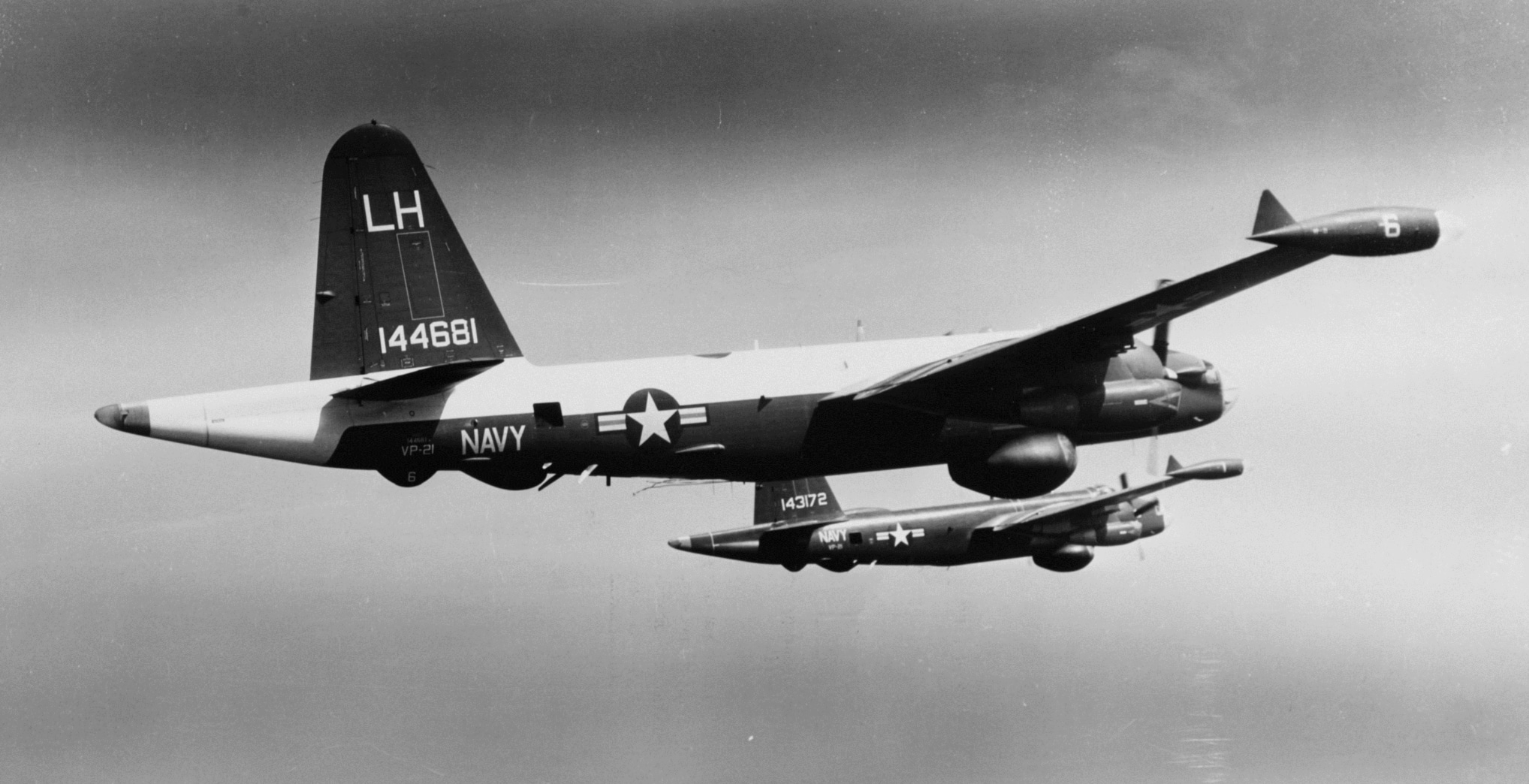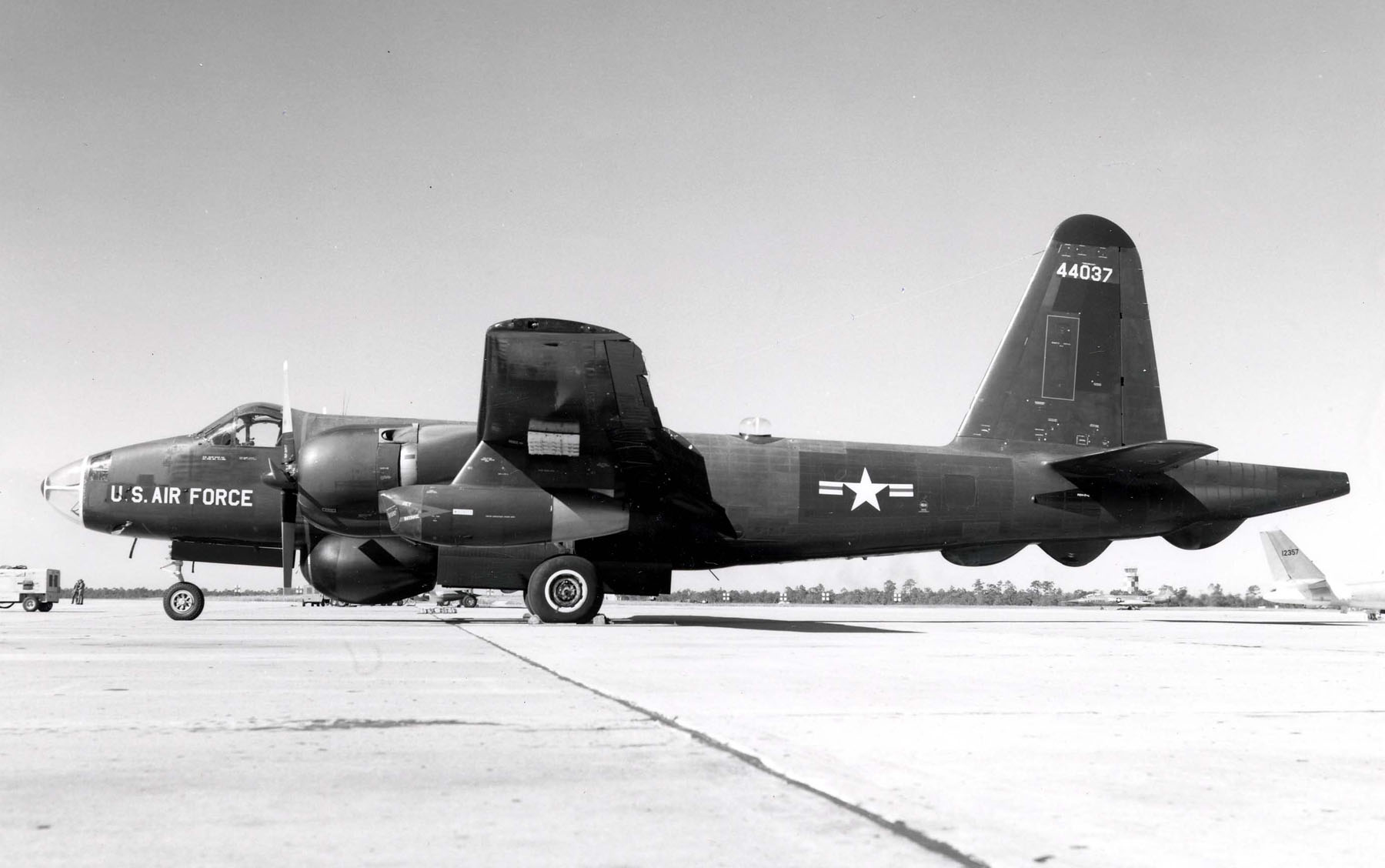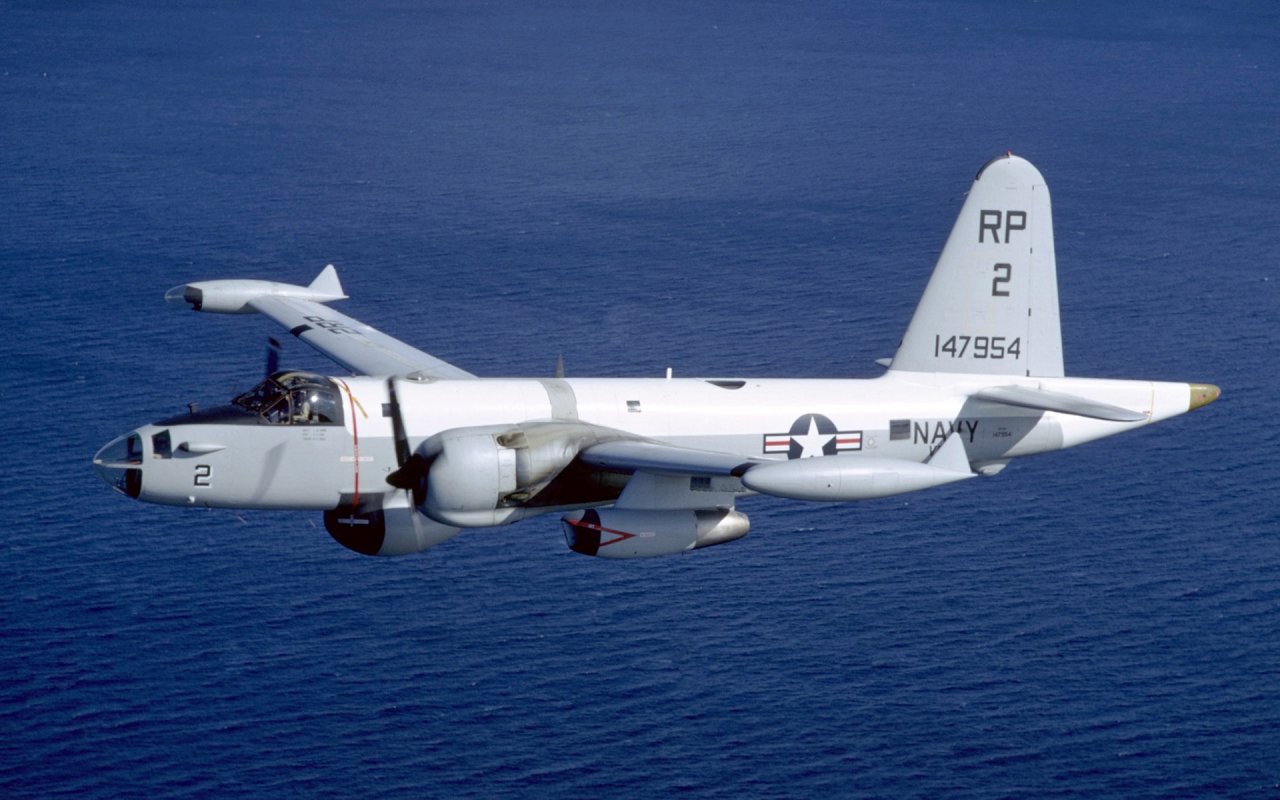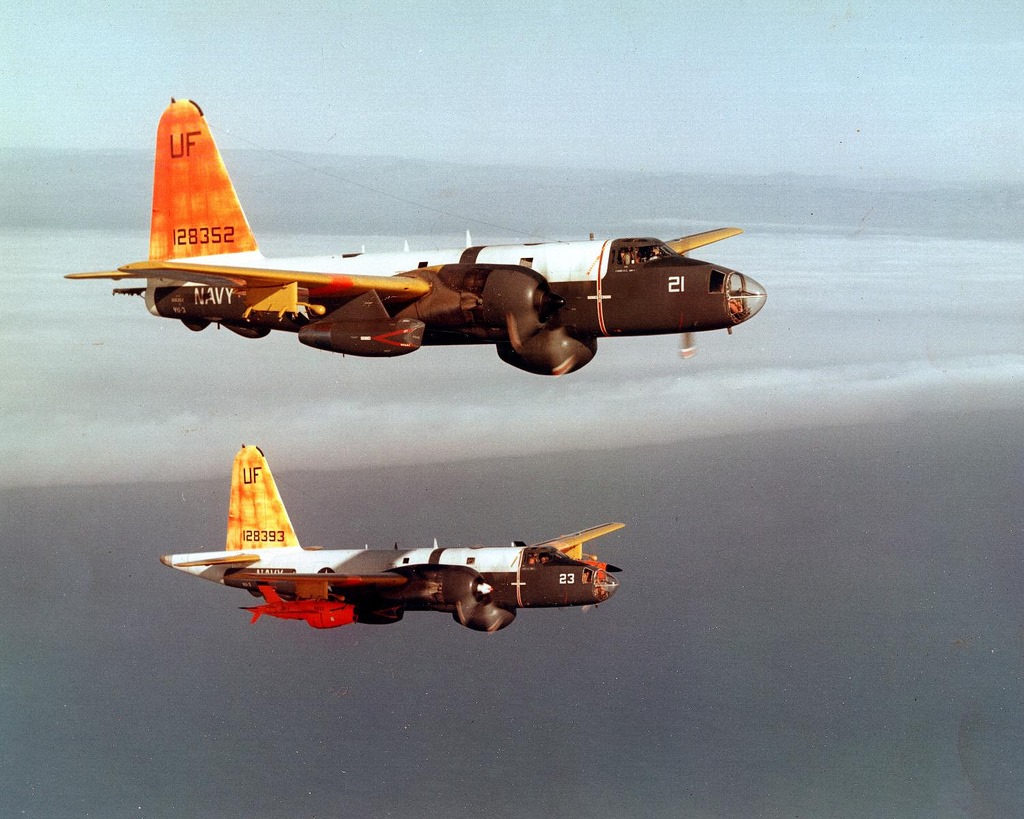Those Crazy Cats
Have you ever seen a picture of a P-2 with ARMY painted on it? It’s (probably) not a fake. The Army’s First Radio Research Company (Aviation) Crazy Cats operated a handful of AP-2Es for 42,500 accident-free hours in and around Vietnam between 1967 and 1972. The Crazy Cats flew electronic reconnaissance missions out of Cam Ranh Air Base near Cam Ranh Bay. The Army Neptunes specialized in “ferret” missions, listening to and recording enemy voice and Morse code transmissions.
The Blackest Neptunes
Even more secretive were the few United States Air Force Neptunes designated RB-69A. Under the innocuous-sounding code name Project Cherry, these Lockheed Skunkworks-modified electronic reconnaissance and intelligence aircraft were briefly operated by CIA crews from West German bases over the Iron Curtain. Other RB-69As were provided to the Taiwanese 34th Squadron Black Bats, who operated them from Taiwanese bases over mainland China between 1957 and 1966 inserting and dropping supplies to agents, dropping leaflets, and mapping Chinese air defense network installations. Every one of the RB-69As in Taiwanese service was lost and their crews killed. If you want to know more about these very black missions, the CIA currently plans to declassify them. In 2022.
Whatever the Job the Neptune Could Do It
Neptunes continued to do whatever they were asked to do after the Vietnam War ended. Several were modified to carry aloft, launch, and control drones. Others were used for training aircrews. The Lockheed P-3A Orion maritime patrol aircraft began replacing the Neptune beginning in the early 1960s. Naval Reserve patrol squadrons continued to operate P-2s through the 1960s and into the 1970s. But with the inevitability of time gradually the early-model P-3s replaced the late-model P-2s in both fleet and reserve patrol squadrons. Navy Patrol Squadron 23 (VP-23) Seahawks retired their last operational active duty Navy P-2s on 20 February 1974. But Neptune’s Trident served on.
Foreign-Flagged Neptunes
Argentinian Neptunes were utilized to perform maritime surveillance of Chilean naval units during the 1978 conflict with Chile and similar surveillance of British naval units during the 1982 Falklands War, enabling Dassault Super Etendards to successfully attack several Royal Navy ships. The Canadians used 25 Neptunes between 1955 and 1960 as replacements for their aging Avro Lancaster bombers used for maritime patrol and surveillance. The Japanese Kawasaki P-2J was a Neptune powered by General Electric T-64 turboprop engines. The P-2J also received a further forward fuselage extension and revised aft control surfaces. These turbo-Neptunes served until replaced by license-built P-3C Orions in 1984.
Recognizing Lockheed Quality
Military operators of the P-2 Neptune series included Argentina, Australia, Brazil, Canada, France, Japan, Netherlands, Portugal, Republic of China (Taiwan), United Kingdom, and the United States Army, Air Force, and Navy. Civilian operators include Aero Union, Minden Air, and Neptune Aviation Services. There are currently about 25 airworthy Neptunes, including fire bombers, a restored P-2H in Australia, and the Mid Atlantic Air Museum’s P-2H.
Neptune Trivia
Here are six things you might not know about the P-2 Neptune:
1- In order to take advantage of the J34 jet engines but not add a complete second fuel system for them, the Neptune’s pod-mounted J34 engines burned the same regular avgas (aviation gasoline) that its Wright R-3350 reciprocating engines did.
2- The Neptune was one of the first aircraft designed from the start to be easily manufactured and maintained. Sub-assemblies allowed shorter assembly times. They also made it easier to maintain the P-2. A complete R-3350 engine change only took 30 minutes; a propeller change only 22 minutes. An outer wing panel change only took about 80 minutes.
3- Firefighting Neptunes typically carry more than 2,000 gallons of chemical flame retardant “slurry” in quick-release tanks built into the former bomb bays of the modified P-2s. With military mission equipment removed these aging and due-for-replacement Neptunes are considered to be the nimblest P-2s- especially after depositing their loads on at-risk vegetation.

4- The shape of the Neptune’s tail-mounted control surfaces could be altered in flight in order to maintain directional trim while fuel was burned off. This “varicam” tail was also used on subsequent Lockheed aircraft.
5- Soviet MiG-15 fighters intercepted and shot down, with the loss of all ten crew members, a US Navy P2V-3W Neptune that was probing the defenses of the Soviet Navy base at Vladivostok on November 6th The standard whose-airspace-was-it arguments ensued, but evidently the MiG-15 pilots were decorated, leading Americans to believe the shoot down was not only deliberate but also likely approved by Soviet leadership. Years later witnesses told stories of survivors from this Neptune who were thoroughly interrogated and executed. Several other Neptunes were lost under similar circumstances during the Cold War.
6- The configuration of the aircraft, with both reciprocating and jet engines, was shared by a few other designs. One was the Consolidated B-36 Peacemaker strategic bomber. Another was the Fairchild C-123 Provider. For a free lifetime subscription to Avgeekery.com, can you name six more operational aircraft similarly configured? Hint: There are a total of 12. No Googling!
[youtube id=”duIJSnGY3XQ” width=”800″ height=”454″ position=”left”]





